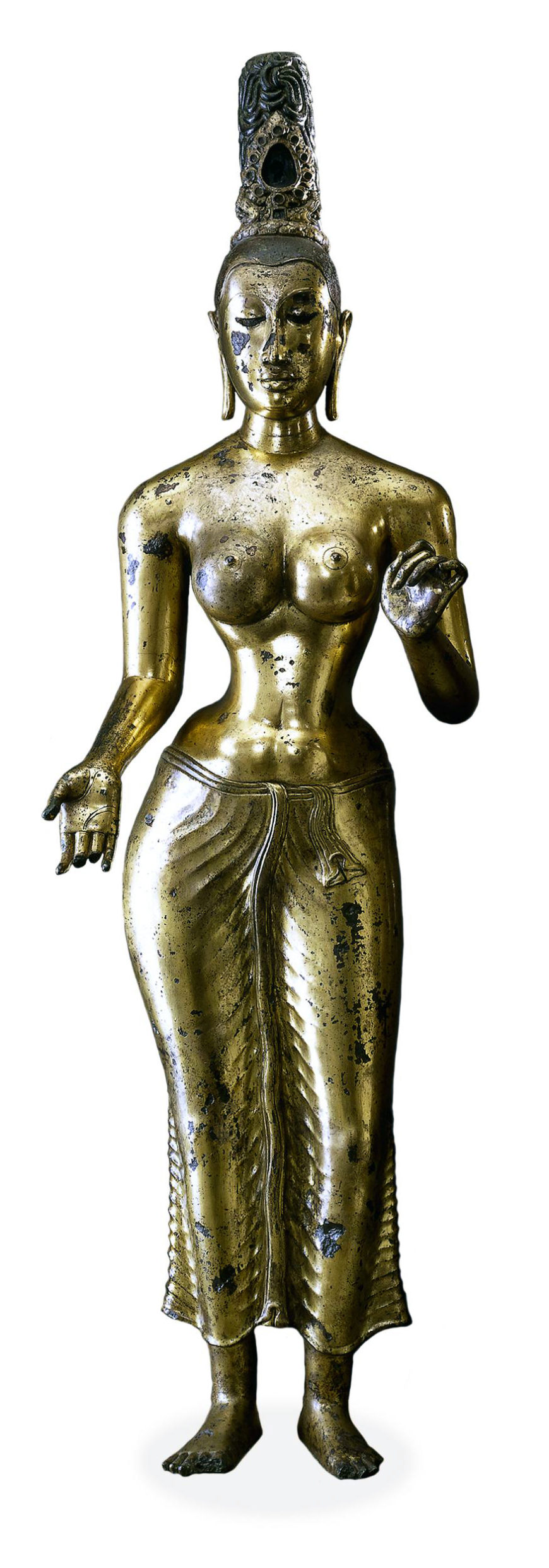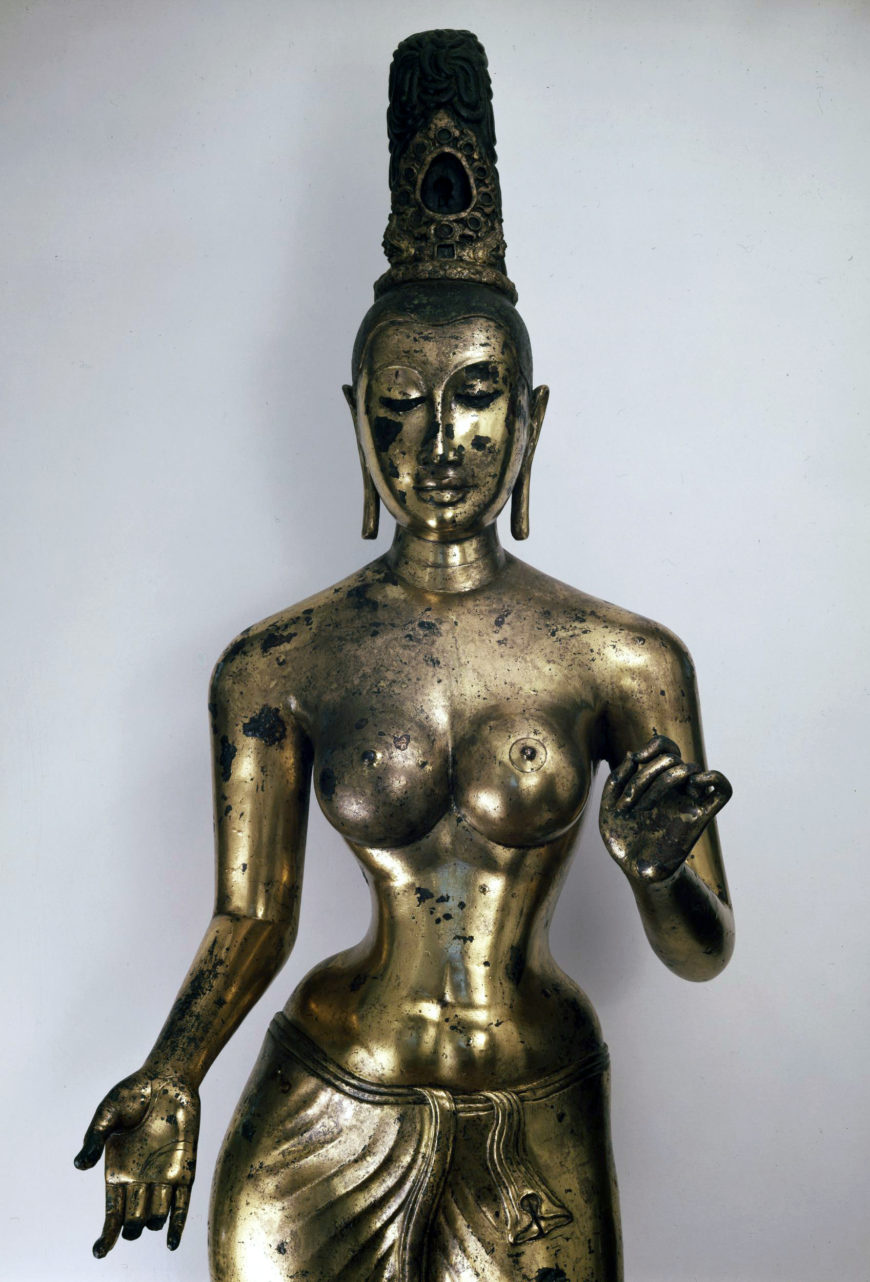
Statue of Tara, 700–750, found between Trincomalee and Batticaloa, Sri Lanka, 143 cm (© The Trustees of the British Museum)

Statue of Tara, 700–750, found between Trincomalee and Batticaloa, Sri Lanka, 143 cm (© The Trustees of the British Museum)
This image is of the popular Buddhist goddess, Tara, the consort of Avalokiteshvara, the bodhisattva of compassion. Buddhism arrived in Sri Lanka in about the third century B.C.E. and has had a continuous history on the island ever since. Sri Lanka is today a Theravada Buddhist country, like Myanmar (Burma), Thailand and Cambodia. However, this sculpture, and other Sri Lankan bodhisattva images are clear evidence for the presence in the medieval period of Mahayana Buddhism as well as the Theravada form of the faith.
This image is a fine example of figural bronze-casting using the lost wax process. Unusually, it is solid cast unlike the majority of bronze images which were cast on a clay core. This sculpture has also been gilded subsequent to casting.
The flame-like surround to the central cavity in the headdress was doubtless once inlaid with precious stones. The cavity itself probably once contained a small seated image of the Buddha Amitabha who is considered to be the ‘parent’ Buddha for both Avalokiteshvara and Tara.

Statue of Tara, 700–750, found between Trincomalee and Batticaloa, Sri Lanka, 143 cm (© The Trustees of the British Museum)
The goddess is naked to the waist with a lower garment flowing to her ankles. Her right hand is shown in the position of varadamudra, the gesture of giving while her left hand is empty but may once have held a lotus flower.
This image was for a long time identified as the local goddess Pattini, whose cult is popular in Sri Lanka; however, the identification as Tara is now accepted.
© The Trustees of the British Museum


